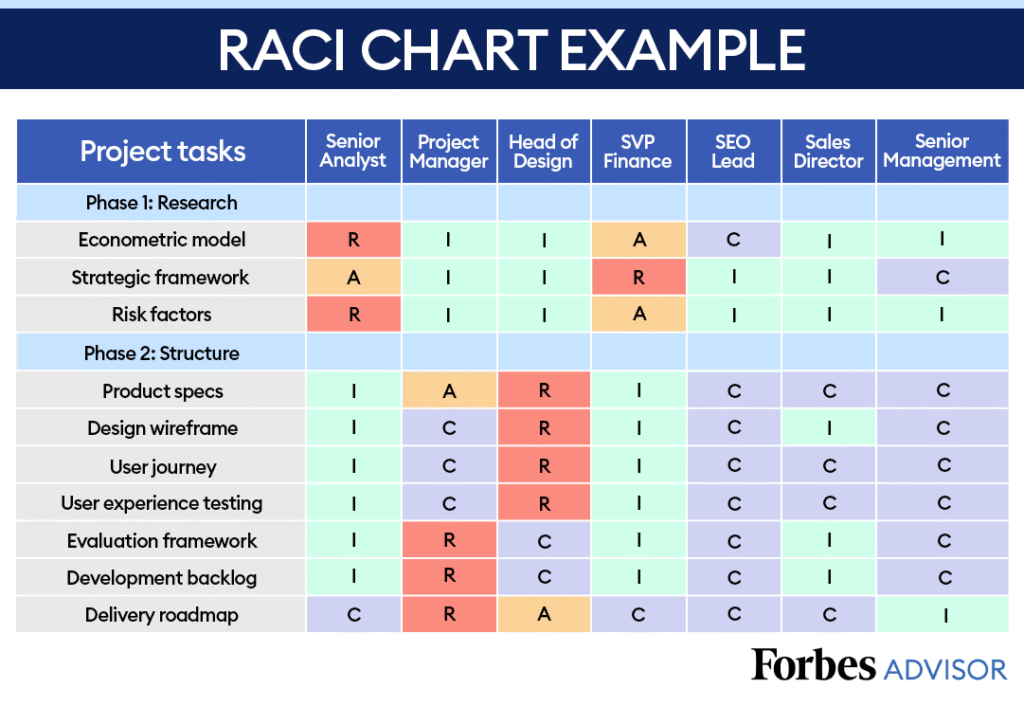Why Team Alignment Is Your Secret Weapon for Marketing Success
Marketing teams today face unprecedented pressure to deliver results faster while managing complex, multi-channel campaigns.
Yet according to recent McKinsey research, only 56% of frontline employees understand how their role contributes to organizational purpose.
This disconnect costs businesses dearly, with misalignment leading to $8.9 trillion in lost global productivity annually.
When you align teams effectively, everything changes. Research shows that aligned organizations are 1.9 times more likely to hit financial targets and 2.5 times more likely to outperform competitors.
In marketing specifically, companies with strong team alignment achieve 32% year-over-year revenue growth compared to just 10% for misaligned teams.
The path to faster marketing wins doesn’t require bigger budgets or more headcount.
It demands strategic alignment that connects every team member’s daily work to overarching business objectives, creating a unified force that executes with precision and speed.
What Is Team Alignment and Why Does It Matter?
Team alignment represents the strategic synchronization of people, processes, and priorities toward shared goals.
Beyond simple agreement, true alignment means every team member understands not only what needs to be done, but why it matters and how their individual contributions drive collective success.
For marketing teams, alignment transforms how campaigns are conceived, executed, and measured. When marketing and sales teams work in alignment, they achieve 208% higher revenue growth from marketing strategies.
Additionally, aligned organizations save 30% on customer acquisition costs while generating 20% higher lifetime customer value.
The business case is compelling. PwC research indicates that aligned organizations are four times more likely to execute well and generate superior returns on shareholder investments.
Yet only 24% of employees say culture and alignment impact how they work, revealing a critical gap that forward-thinking leaders must address.
According to Gallup’s latest research, 70% of team engagement variance stems directly from managers.
This means that building team alignment starts with leadership commitment to creating clarity, establishing shared accountability, and fostering open communication channels that keep everyone moving in the same direction.
The High Cost of Misalignment in Marketing Teams
Before exploring alignment strategies, understanding the true cost of misalignment provides essential context.
When teams operate in silos, the consequences extend far beyond missed deadlines:
Reduced Revenue Performance
Misaligned teams experience 4% revenue decline annually, while aligned counterparts grow 20% faster.
This 24-percentage-point gap compounds over time, creating insurmountable competitive disadvantages.
Wasted Marketing Spend
Without alignment between marketing and sales, campaigns target the wrong audiences, messaging conflicts confuse prospects, and qualified leads fall through cracks.
Studies show 86% of workplace failures stem from poor collaboration or ineffective communication.
Longer Sales Cycles
Disjointed handoffs between marketing and sales extend time-to-close significantly. Aligned teams achieve 36% shorter sales cycles, accelerating cash flow and improving forecast accuracy.
Lower Employee Engagement
A staggering 66% of employees express dissatisfaction with team collaboration, citing unproductive meetings and unclear priorities. This disengagement feeds turnover, with replacement costs reaching 50-200% of annual salary.
Diminished Customer Experience
According to research, 90% of sales and marketing leaders agree that alignment positively impacts customer experience.
The inverse is equally true: misalignment creates inconsistent touchpoints that erode trust and damage brand reputation.
Harvard Business Review research reveals that 93% of employees don’t fully understand their company’s business strategies or how they’re expected to contribute.
This fundamental disconnect explains why so many well-intentioned marketing initiatives fail to deliver expected results.
Top Strategies to Align Teams for Marketing Success
1. Establish Clear, Shared Goals Using the OKR Framework
The Objectives and Key Results (OKR) framework provides structure for creating team alignment around measurable outcomes. Unlike traditional goal-setting, OKRs connect individual work to strategic priorities through transparent, collaborative processes.
Successful OKR implementation begins with defining organizational objectives that cascade into team-level key results.
Each team then creates its own OKRs that support broader strategic goals while maintaining autonomy over execution. This approach ensures everyone understands what success looks like and can track progress in real-time.
Companies using OKR frameworks report significant improvements in focus and coordination. The framework answers critical questions: What are we working toward? How will we measure success? How does my work contribute to team objectives? When these questions have clear answers, team alignment becomes natural rather than forced.
Research shows that aligned teams are 260% more motivated to work, experience 41% lower turnover rates, and achieve 40% higher productivity. These outcomes stem from the clarity and purpose that well-structured OKRs provide.
2. Create Unified Communication Channels
Effective communication forms the foundation of team alignment. According to Statista research, 89% of respondents rate teamwork between departments as important or very important to job satisfaction. Yet communication breakdowns remain one of the most common obstacles to alignment.
Establishing dedicated communication platforms ensures information flows freely across teams. Tools like Slack or Microsoft Teams facilitate instant messaging, video calls, and file sharing that keep distributed teams connected.
However, technology alone doesn’t create alignment. It must be paired with clear communication protocols and cultural norms that encourage transparency.
Regular alignment meetings maintain focus on shared priorities. These sessions should include structured agendas, rotated leadership to promote ownership, and dedicated time for open discussion of challenges. When conducted effectively, alignment meetings transform from time-wasters into catalysts for collaboration and problem-solving.
The key is balancing synchronous and asynchronous communication. While real-time meetings build relationships and resolve complex issues, asynchronous updates through shared dashboards and project management tools provide continuous visibility without meeting overload.
3. Define Roles, Responsibilities, and Decision Rights
Ambiguity around roles and responsibilities creates friction that undermines team alignment. When people don’t know who owns what, work falls through cracks, duplicate efforts waste resources, and decision-making stalls.
The RACI matrix (Responsible, Accountable, Consulted, Informed) provides a framework for clarifying roles on cross-functional initiatives.

This tool maps out exactly who does the work, who has final authority, who provides input, and who needs to be kept in the loop.
McKinsey research on top team performance emphasizes that defining the “right team” requires answering fundamental questions: What is the team’s mandate? Which decisions sit with this group collectively versus as individuals? What roles are essential, and do we have best-fit talent in each seat?
Clear role definition enables faster decision-making, reduces confusion, and creates accountability. When team members understand their scope of authority and responsibility, they can act confidently without constant approval-seeking that slows execution.
4. Implement Cross-Functional Collaboration Practices
Cross-functional collaboration breaks down silos that limit team alignment and innovation. When diverse perspectives and expertise combine, teams solve problems more creatively and execute more effectively.
Research demonstrates that businesses promoting collaboration are five times more likely to be considered high-performing.
Cross-functional teams deliver multiple benefits, including improved communication, increased innovation, knowledge sharing, streamlined workflows, and more inclusive work environments.
For marketing teams, cross-functional alignment between marketing, sales, and customer success ensures consistent customer experiences throughout the buyer journey.
When these functions share a common language and framework, they identify opportunities more effectively and deliver promised value more consistently.
Companies deploying cross-functional collaborative structures report 20% increases in productivity and achieve 25% faster time-to-market.
These improvements stem from leveraging diverse skills and perspectives while eliminating handoff delays that plague siloed organizations.
5. Establish Shared Metrics and Success Criteria
Aligned teams measure success using the same key performance indicators. When marketing and sales track different metrics, they optimize for different outcomes, creating internal competition rather than collaboration.
Shared metrics might include Sales Qualified Leads (SQLs), MQL-to-SQL conversion rates, revenue influenced by marketing campaigns, customer acquisition costs, and customer lifetime value.
These metrics focus both teams on outcomes that matter to business success rather than vanity metrics that inflate individual departmental performance.
Regular review of shared metrics in joint meetings keeps alignment alive. These sessions should celebrate wins, diagnose challenges, and adjust strategies based on performance data. The goal is to create continuous learning loops that improve effectiveness over time.
PwC research shows that performance alignment addresses the “alignment gap” between strategic intent and day-to-day business operations.
Clear KPIs that cascade from strategy through team objectives to individual goals create a line of sight that connects daily work to strategic priorities.
6. Foster Psychological Safety and Trust
Team alignment requires psychological safety: the belief that team members can speak up, take risks, and admit mistakes without fear of judgment or reprisal.
Google’s Project Aristotle research identified psychological safety as the single most important factor in team performance.
Deloitte’s research demonstrates that high-performing organizations establish psychological safety as a foundation for collaborative, effective teams.
Leaders foster this environment by leading with vulnerability, admitting their own mistakes, and creating space for constructive disagreement.
Building trust takes time and intentional effort. Practices that strengthen trust include demonstrating commitment to team direction, ensuring all members have a voice in meetings, acknowledging team successes, and encouraging critique of ideas rather than individuals.
Research indicates that 79% of employees globally trust their employer, yet significant trust gaps still exist that affect productivity. Addressing these gaps through transparency, consistency, and genuine care for employee well-being creates the foundation for sustained team alignment.
7. Leverage Technology and Tools for Alignment
Modern technology enables team alignment at scale. Project management platforms like Asana or Monday provide visibility into who’s working on what, track progress toward shared goals, and facilitate collaboration across distributed teams.
Worxmate OKR software, specifically designed for goal alignment, helps teams set objectives, track key results, and visualize connections between individual work and strategic priorities. These tools create transparency that prevents misalignment before it becomes problematic.
The key is selecting integrated tools that reduce rather than increase complexity. When teams use scattered systems that don’t communicate with each other, technology becomes an obstacle rather than an enabler of alignment. Integrated martech stacks with strong CRM integration provide the single source of truth that keeps marketing and sales aligned.
Collaborative tools work best when paired with clear processes and cultural norms. Technology amplifies good practices but cannot compensate for a lack of strategic clarity or leadership commitment to alignment.
Real-World Case Study: How Team Alignment Drives Measurable Results
Gartner’s 2025 research on sales and marketing alignment reveals compelling evidence of alignment’s impact on business outcomes.
Their study found that organizations with tight alignment between sales and marketing see up to 36% improvement in buyer satisfaction and significantly accelerated deal velocity.
The research confirms that internal misalignment weakens negotiation power by creating mixed messages and eroding buyer trust.
When teams operate with unified messaging, strategically positioned value propositions, and calibrated negotiation objectives, they become dramatically more effective at influencing deals and driving value.
McKinsey’s extensive research on top team performance provides additional validation. Their analysis shows that aligned teams are 1.9 times more likely to hit financial targets and 2.5 times more likely to outperform competitors.
These performance differences stem from three critical factors: alignment on what truly matters, collective accountability instead of siloed leadership, and trust and authentic connection among team members.
A pharmaceutical company case study from McKinsey illustrates practical application. The company lacked a clear top team definition and structure, preventing true accountability.
By redefining team purpose and composition, creating annual retreats for strategic alignment, and implementing a collaboration matrix to identify high-value interfacing points, the company transformed performance.
The CEO invested heavily in three individuals who set the team’s mood and were crucial to boosting overall performance, while decisively removing toxic members. The result was a high-functioning team with clear structure, well-defined roles, and elevated accountability that boosted both morale and organizational performance.
Forrester Research quantifies alignment benefits precisely: aligned organizations grow 19% faster and are 15% more profitable than misaligned counterparts. Companies with tight sales and marketing alignment achieve 24% faster revenue growth and 27% faster profit growth over three-year periods.
Conclusion
Team alignment is a competitive necessity in today’s fast-paced marketing environment. Organizations that successfully align teams around shared goals, clear communication, and unified metrics consistently outperform those operating in silos.
The research is unequivocal: aligned teams achieve 32% year-over-year revenue growth, close deals 36% faster, and generate 20% higher customer lifetime value.
Building effective team alignment requires leadership commitment, systematic approaches like OKRs, investment in collaboration tools, and cultivation of psychological safety that encourages authentic communication.
While the journey demands effort, the payoff (faster execution, better results, and stronger competitive positioning) makes it essential for any marketing organization serious about winning.
The question isn’t whether to prioritize team alignment, but how quickly you can implement proven strategies that transform disconnected individuals into high-performing, aligned teams delivering exceptional marketing outcomes.
Frequently Asked Questions (FAQs)
1. What does it mean to align teams in marketing?
Team alignment in marketing means ensuring all team members work toward shared goals with a clear understanding of priorities, roles, and how their contributions impact organizational success. It involves coordinating efforts across marketing, sales, and other functions to deliver consistent messaging and unified customer experiences that drive measurable business results.
2. How can I quickly align teams for better marketing performance?
Start by establishing clear, shared goals using frameworks like OKRs that connect individual work to strategic priorities. Implement regular alignment meetings with structured agendas, create unified communication channels, and define roles and responsibilities explicitly. Use shared metrics that focus all teams on outcomes that matter to business success rather than departmental vanity metrics.
3. What are the biggest obstacles to team alignment?
The most common obstacles include unclear strategic priorities, competing departmental goals, poor communication channels, undefined roles and responsibilities, a lack of psychological safety, and the absence of shared success metrics. Leadership misalignment at the executive level cascades throughout organizations, making top team alignment an essential foundation for broader organizational alignment.
4. How does team alignment improve marketing ROI?
Aligned teams eliminate wasted spend on misaligned campaigns, reduce customer acquisition costs by 30%, achieve 36% shorter sales cycles, and generate 20% higher customer lifetime value. By coordinating efforts and optimizing for shared metrics, aligned marketing and sales teams deliver 208% higher revenue growth from marketing strategies compared to misaligned counterparts.
5. What tools help maintain team alignment?
Project management platforms like Asana or Monday.com provide visibility and collaboration capabilities. OKR software such as WORXMATE connects individual work to strategic goals with real-time tracking. Communication tools like Slack facilitate instant information sharing. The key is selecting integrated tools that create a single source of truth rather than scattered systems that increase complexity.
6. How often should teams review alignment?
High-performing teams review alignment continuously through daily standups, weekly check-ins, and monthly strategic reviews. Quarterly planning sessions reassess objectives and key results based on market changes and performance data. Annual retreats provide space for deep strategic alignment and team relationship building. The specific cadence should match organizational pace and complexity.
7. Can small marketing teams benefit from formal alignment processes?
Absolutely. Small teams often have the advantage of easier communication, but still benefit from formal alignment structures that clarify priorities, track progress, and scale as organizations grow. Implementing lightweight OKR frameworks and regular alignment check-ins creates a foundation for sustainable growth without bureaucracy that slows execution.









